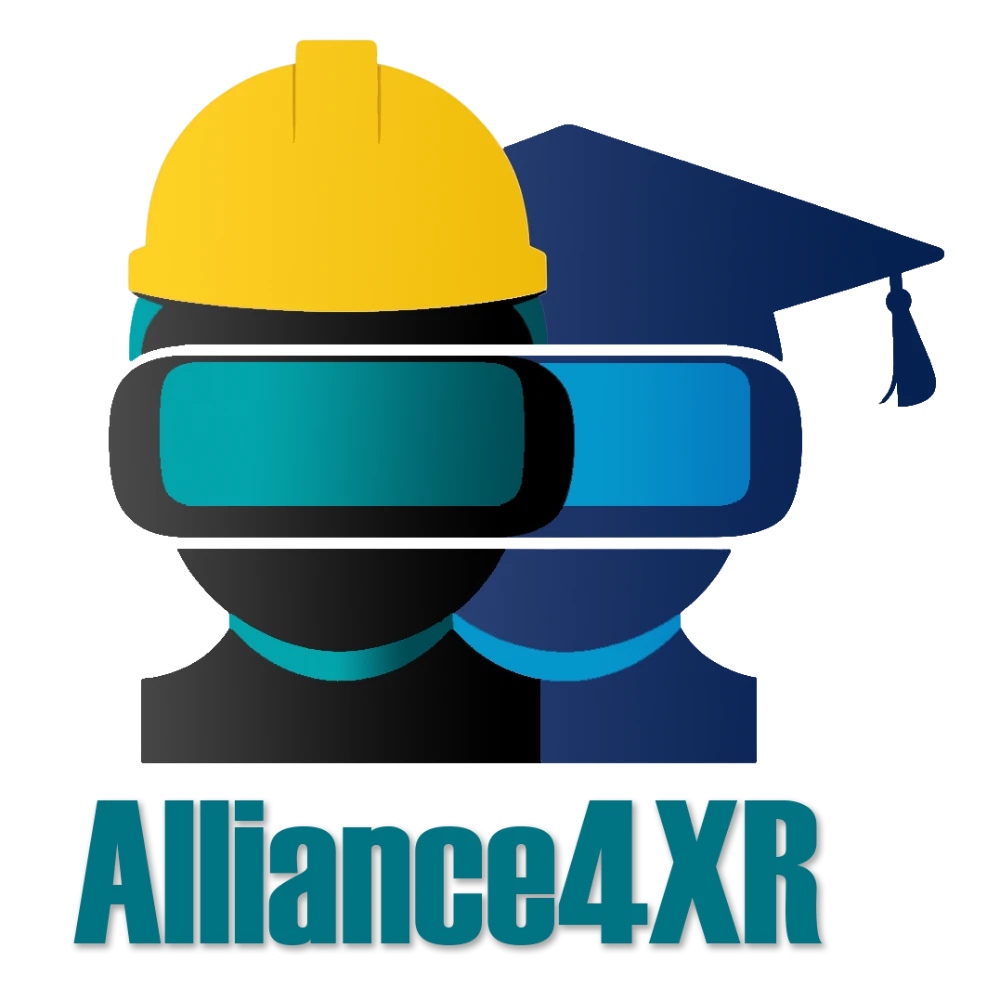Alliance4XR
Project Description
Multiple recent studies and surveys are underlining a gap in Extended Reality (XR) theory and practice training modules within tertiary educations and vocational training centres. This gap is causing a continuous shortage of relevant skills in many industry sectors and thus, hindering faster and better development of commercial products and services. In this context, the Alliance4XR project is set on co-creating and testing a well-tailored teaching and training methodology and material for empowering HEIs and VET to successfully address the challenge of XR digital skills mismatch focusing with a focus in engineering. This methodology and material will enhance the capacity and knowledge of HEIs, VET in successfully addressing the technological and access-to-market challenges that students and trainees face when entering employment in relevant engineering professions. The methodology will be co-defined, deployed, tested, quality assessed and improved through local initiatives with the active involvement of HEIs, VETs, business and industry stakeholders. This skills gap in extended reality and engineering will be bridged by mapping the syllabi horizontally on a European level, identifying the needs for AR/VR teaching, devising the material and providing training and teaching packages with demos, sample data and customizable software

Specific Objectives
- Bridge education offering with real needs by mapping and analyzing current requirements
During the last years, green skills have been crossing yet another frontier, one that is guided by the progress in XR sector. In many cases, education and training neglect the demands the business, industry and market sector exert on graduates’ or trainees’ skills and knowledge. Towards this challenge three areas will be mapped: (i) the market needs on XR for sustainable, resilient and green development and the demands it places on emerging professions, and (ii) the education and training institutions’ ability to adopt and promote training on XR (iii) challenges and good practices in the knowledge flow and innovation. This analysis will be supported by a collective exercise to allow uo accurately prioritize areas of interest, draw a more detailed depiction of where there is an education and training failure or a weak case of knowledge flow and refine the target and core focus of ALLIANCE4XR’s curricula. - Create new or update existing teaching and training material addressing both University and Professional training level
ALLIANCE4XR aims to develop and promote XR teaching and training materials to support the development of green skills. These materials will be tailored to diverse engineering contexts and learning preferences, including teacher-assisted learning, e-learning, and training-the-trainers. Translated into multiple languages for partner institutions, the curricula will address green, climate, and environmental challenges while facilitating the adoption of digital technologies. The project will continuously test and update training methods to enhance awareness and skills among academic communities. Demonstrations will be conducted at partner institutions and on a larger scale to engage EU stakeholders and end-users. Ultimately, ALLIANCE4XR seeks to innovate education design and delivery, improving the quality and relevance of certified skills, and addressing skills mismatches. - Test the newly created material and bring it closer to the targeted audience
To ensure that the final training module will fulfill as much as possible the end-users’ expectations, the consortium deploys a demonstrating phase consisting of 2 rounds of curricula showcasing, evaluation and fine-tuning, so as to achieve maximum acceptance levels of higher education and vocational education and training systems by the end of the project. In addition, a solid impact evaluation methodology so as to capture and validate the benefits of the curricula in the education and training processes is launched. Finally, ALLIANCE4XR aims to build on consortium’s networks to establish an alliance model which will contribute in a revolutionary XR as an asset Pan-European ecosystem which will favour innovation with focus on green, resilient and sustainable development. - Deliver the material through an online platform where software, data, and 3D designs can be matched with lectures and training courses
To ensure that the final training module will fulfill as much as possible the end-users’ expectations, the consortium deploys a demonstrating phase consisting of 2 rounds of curricula showcasing, evaluation and fine-tuning, so as to achieve maximum acceptance levels of higher education and vocational education and training systems by the end of the project. In addition, a solid impact evaluation methodology so as to capture and validate the benefits of the curricula in the education and training processes is launched. Finally, ALLIANCE4XR aims to build on consortium’s networks to establish an alliance model which will contribute in a revolutionary XR as an asset Pan-European ecosystem which will favour innovation with focus on green, resilient and sustainable development. - Create a sustainable vehicle that generates educational and training material that remain constantly relevant at a market and society level
This objective is addressed by applying case-based learning methodology, a concept where learning institutions and businesses are collaborating in producing learning material and also in providing the teaching through the use of collaboration platforms. The digital learning materials and tools being developed will be made available as Open Educational Resources. - Push for the adoption and mainstreaming of the training/teaching modules through multiplier activities
Building on the collected evidence, evaluation results and lessons learnt from demonstrating the project curricula, valuable insights and recommendations for the wider promotion and uptake of ALLIANCE4XR methodology, curricula and platform are produced, that could feed the development of future relevant initiatives. Finally, an ambassadors’ board will be established including both partners’ institutions as well as 3rd party institutions that will work to promote the project results receive institutional acceptance by university departments, VETs, laboratories and research institutes.
Project Details
PARNERS
13 partners
Funding programme:
Project Reference: 101140252
